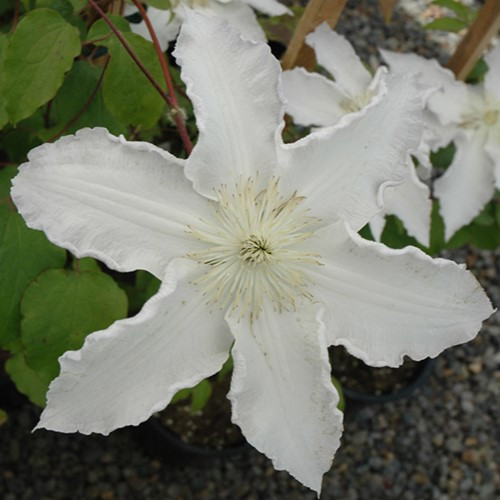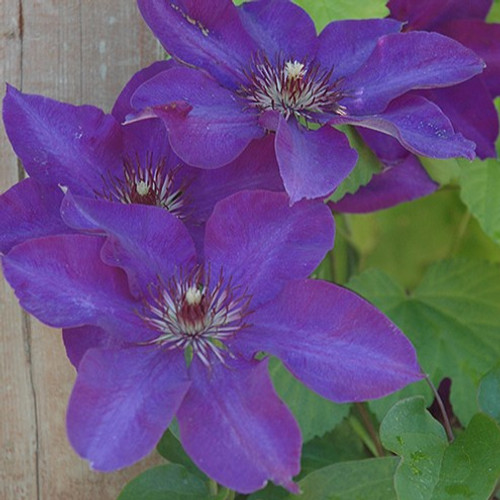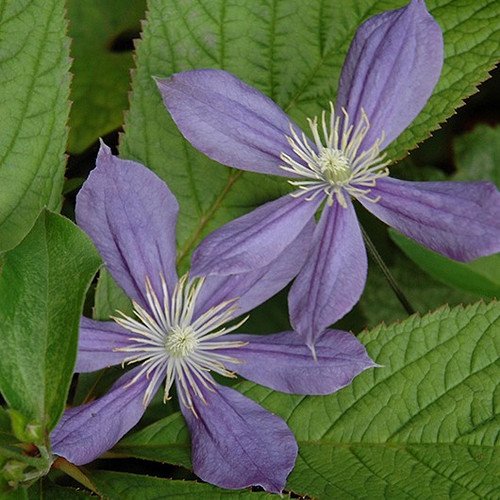| Clematis 'Gillian Blades' | USDA Zone: 4-10 |
Clematis Gillian Blades bears large 7-9″ white blooms with frilled edges against a yellow stamen. Early flowers may be tinged with pink or blue maturing to pristine white. Best grown in partial sun.
Spectacular large, white flowers with wavy margins, are produced on a vigorous vine, a great plant for the novice and expert gardener alike.
Gillian Blades Clematis is recommended for the following landscape applications;
- Accent
- Hedges/Screening
- General Garden Use
- Container Planting
Bloom Time: Late Spring, Early Summer
Long-Blooming
Beneficial for Pollinators
Attracts Butterflies, Hummingbirds
Deer Resistant
Rabbit Resistant
Common Name: Clematis
|
Key Feature
|
Light Needs | Landscape Uses |
 |
 |
|
|
|
|
| More About Gillian Blades Clematis |
| Height: 6-8 ft |
Spread: 3-4 ft |
Flower Colour: White Shades |
|
Clematis are prized for their incredible flowers, most as large as your hand. Clematis will train onto trellises, fences or arch over doorways. Stunning when used alone or when several colors are mixed. This woody vine should only be grown in full sunlight. Provide full sun for the foliage; and partial shade at the root zone. In warmer climates, Clematis do best with a shaded or partially shaded area. It does best in average to evenly moist conditions, but will not tolerate standing water. It is somewhat tolerant of urban pollution. Consider applying a thick mulch around the root zone in both summer and winter to conserve soil moisture and protect it in exposed locations. Pruning Group 2 - In this group all first flowering comes from last season's ripening stems. In early Spring watch for swelling leaf buds beginning to show. Cut all dead material off above these swelling buds. Be sure all growth is tied to the trellis, etc. at this time. Do not tie too tightly, so growth will not be hampered or cracked. If intertwining Clematis, pruning will be easier if you select varieties with the same pruning type. Note that when grown in a container, it may not perform exactly as indicated on the tag - this is to be expected. Also note that when growing plants in outdoor containers and baskets, they may require more frequent waterings than they would in the yard or garden. Be aware that in our climate, most plants cannot be expected to survive the winter if left in containers outdoors, and this plant is no exception. NOTE: Some flowers and plants may be harmful or poisonous to people or pets if touched or ingested. If you require more information before placing an order, please let us know in advance. |









